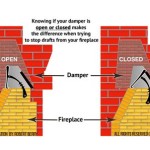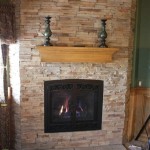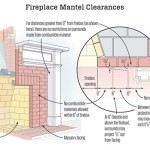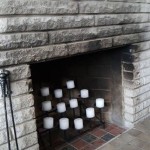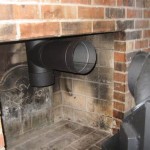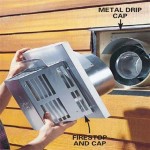Wooden Fireplace Surround Ideas: Enhancing Your Hearth with Style and Warmth
The fireplace, traditionally the heart of the home, provides warmth, ambiance, and a focal point for gatherings. A well-chosen fireplace surround can dramatically enhance its aesthetic appeal, transforming it from a simple heat source into a statement piece that complements the overall design of a living space. Wooden fireplace surrounds, in particular, offer a versatile range of styles, textures, and finishes, making them a popular choice for homeowners seeking to add character and sophistication to their hearth.
The selection of a suitable wooden fireplace surround requires careful consideration of several factors, including the architectural style of the home, the desired aesthetic, the dimensions of the fireplace, and the budget. The type of wood, the finish, and the design details all contribute to the overall impact of the surround. Proper installation is also crucial to ensure safety and longevity.
Understanding Different Wood Types for Fireplace Surrounds
The choice of wood plays a significant role in the appearance, durability, and cost of a fireplace surround. Different wood species offer varying grain patterns, colors, and hardness levels, influencing both the aesthetic and practical aspects of the surround. Some popular options include:
Oak: Known for its strength, durability, and distinctive grain pattern, oak is a classic choice for fireplace surrounds. It can be stained in a variety of colors, from light and natural to dark and rich, making it adaptable to different design styles. Oak is generally a readily available wood type, contributing to its competitive pricing.
Maple: Maple offers a smoother, more uniform grain pattern compared to oak. Its light color makes it ideal for painting or staining in lighter tones, creating a bright and airy feel. Maple is also a relatively hard wood, making it resistant to dents and scratches. However, it can be more susceptible to warping or splintering if exposed to extreme temperature fluctuations or humidity.
Cherry: Cherry wood is prized for its rich, reddish-brown color and smooth texture. It develops a beautiful patina over time, adding character and warmth to the fireplace surround. Cherry is a softer wood than oak or maple, so it may require more care to avoid scratches and dents. Due to its inherent beauty, cherry is often finished with a clear coat to highlight its natural grain.
Pine: Pine is a softwood that is readily available and relatively inexpensive. It has a knotty grain pattern that can add rustic charm to a fireplace surround. However, pine is more susceptible to dents and scratches than hardwoods, and it can also be prone to warping. Pine is a good option for budget-conscious homeowners who are willing to embrace its rustic character.
Mahogany: Mahogany is a luxurious hardwood known for its rich, reddish-brown color and fine grain. It is a durable and stable wood that is resistant to warping and cracking. Mahogany is a more expensive option than other wood types, but its beauty and durability make it a worthwhile investment for homeowners seeking a sophisticated and elegant fireplace surround.
Beyond these common choices, other wood types such as walnut, poplar, and alder can also be used for fireplace surrounds, each offering unique characteristics and aesthetic qualities. The selection of wood should be based on factors such as budget, desired aesthetic, and the overall design of the room.
Exploring Different Styles and Design Elements
The design of a wooden fireplace surround can significantly impact the overall aesthetic of the space. Different styles cater to various tastes and architectural preferences, ranging from traditional and ornate to modern and minimalist. Key design elements to consider include:
Traditional Styles: Traditional fireplace surrounds often feature intricate carvings, moldings, and details that evoke a sense of history and elegance. Common elements include fluted columns, dentil moldings, and raised panels. These surrounds often incorporate dark wood finishes or painted surfaces with antique glazes to enhance their classic appeal. Traditional styles typically complement homes with formal living rooms or dining areas.
Modern Styles: Modern fireplace surrounds emphasize clean lines, simple shapes, and minimal ornamentation. They often feature sleek, geometric designs with flush surfaces and concealed hardware. Modern surrounds may incorporate light-colored wood finishes, such as natural maple or painted white, to create a bright and airy feel. They may also feature contrasting materials, such as metal or glass accents, to add visual interest. Modern styles often complement contemporary homes or minimalist living spaces.
Rustic Styles: Rustic fireplace surrounds embrace natural textures, raw materials, and a sense of informality. They often feature reclaimed wood, rough-hewn beams, and exposed hardware. Rustic surrounds may incorporate natural stone or brick accents to enhance their earthy appeal. Dark wood stains or distressed finishes are commonly used to emphasize the wood's natural grain and imperfections. Rustic styles often complement homes with a farmhouse or cabin-inspired aesthetic.
Transitional Styles: Transitional fireplace surrounds blend elements of both traditional and modern styles, creating a balanced and versatile look. They may feature clean lines and simple shapes, but also incorporate subtle traditional details, such as crown moldings or raised panels. Transitional surrounds often feature neutral color palettes and a mix of textures to create a sophisticated and comfortable feel. Transitional styles can complement a wide range of architectural styles and interior design preferences.
Mantel Design: The mantel, the shelf above the fireplace opening, is a key design element that can significantly impact the overall look of the surround. Mantels can be simple and understated, or ornate and decorative. They can be made from the same wood as the surround, or from a contrasting material, such as stone or metal. The mantel provides a surface for displaying decorative items, such as photos, artwork, or candles, adding personal touches to the fireplace.
Beyond these general styles, homeowners can also customize their fireplace surrounds to reflect their unique tastes and preferences. This might involve incorporating custom carvings, unique wood finishes, or personalized design details.
Installation and Safety Considerations
Proper installation of a wooden fireplace surround is crucial for both aesthetic and safety reasons. A poorly installed surround can detract from the overall appearance of the fireplace and, more importantly, pose a fire hazard. It is generally recommended to consult with a qualified contractor or installer to ensure that the surround is installed correctly and safely.
Clearance Requirements: Fireplace surrounds must adhere to specific clearance requirements to prevent combustible materials from overheating and potentially igniting. These requirements vary depending on the type of fireplace, the size of the opening, and the building codes in the local jurisdiction. Generally, non-combustible materials, such as brick or stone, are required close to the firebox opening, while combustible materials, such as wood, must be kept a safe distance away. It is essential to consult with a building inspector or fire safety professional to determine the specific clearance requirements for a given fireplace.
Material Selection: The materials used to construct the fireplace surround must be fire-resistant or fire-retardant to prevent the spread of flames in the event of a fire. Untreated wood can ignite easily, so it is important to use wood that has been treated with a fire-retardant coating. Alternatively, non-combustible materials, such as brick, stone, or metal, can be used in areas that are close to the firebox opening.
Secure Attachment: The fireplace surround must be securely attached to the wall to prevent it from shifting or collapsing. This typically involves using screws, nails, or adhesives to fasten the surround to the wall studs or masonry. The attachment method should be appropriate for the type of wall construction and the weight of the surround. Professional installation ensures proper attachment for stability and safety.
Ventilation: Proper ventilation is essential to prevent the build-up of carbon monoxide, a colorless and odorless gas that can be deadly. The fireplace surround must be designed to allow for adequate airflow around the fireplace opening and up the chimney. Any gaps or cracks in the surround should be sealed to prevent carbon monoxide from leaking into the living space. Carbon monoxide detectors should be installed in the home to provide early warning of dangerous levels of the gas.
Regular Maintenance: Regular maintenance is important to ensure the continued safety and aesthetic appeal of the fireplace surround. Wood finishes should be cleaned and protected from damage. Any cracks, gaps, or loose joints should be repaired promptly. The chimney should be inspected and cleaned regularly to prevent the build-up of creosote, a flammable substance that can cause chimney fires.
Careful planning and consideration of these factors will contribute to a fireplace surround that is both beautiful and safe, enhancing the ambiance and value of a home for years to come.

40 Fabulous Fireplace Design Ideas For Any Budget Or Style

10 Rustic Fireplace Mantel Ideas Blog Red Door

How To Create A Diy Reclaimed Wood Fireplace Surround For Less Than 100 Grand Rapids Interior Design Fuchsia

Reclaimed Wood Fireplace Create A Sunning Surround

50 Cozy Fireplace Ideas Best Mantel Decor

Wooden Fireplace Surround Ideas Direct Fireplaces

40 Best Fireplace Décor Ideas Mantel

Pin By Trisha Vallee On Home Rustic Fireplace Mantels Fireplaces

7 Design Ideas Using Dark Wood Fireplace Mantels Elmwood Reclaimed Timber

Top 60 Best Fireplace Mantel Designs Interior Surround Ideas Remodel Design
Related Posts


